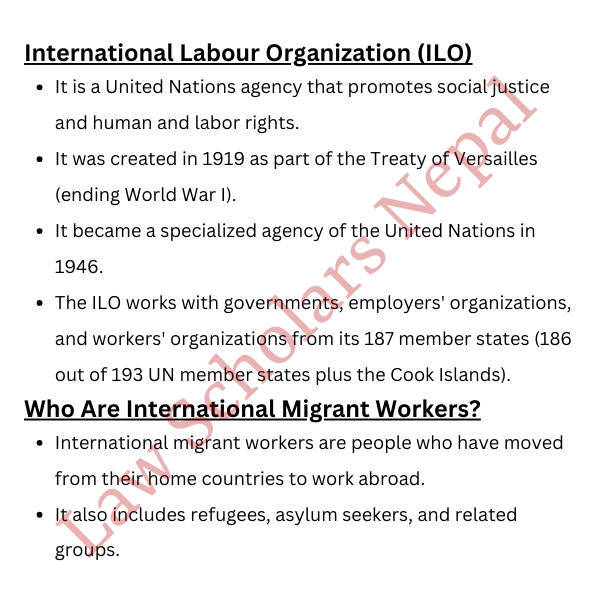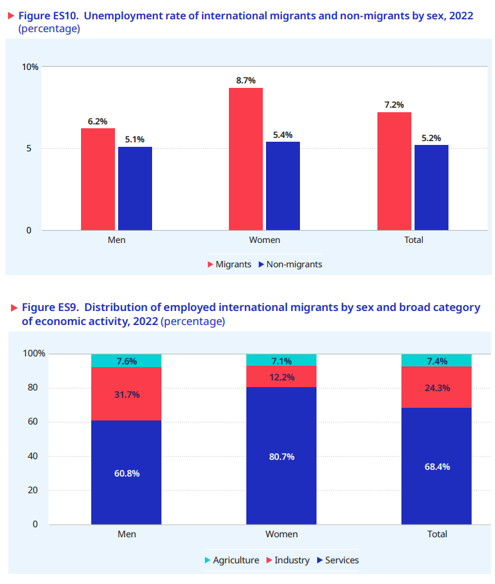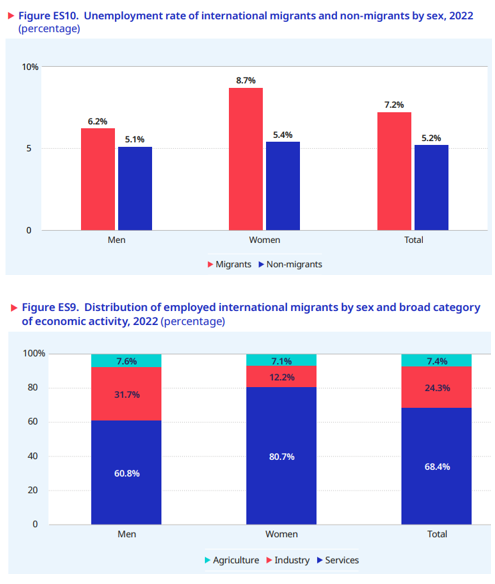Contents
Background:
The fourth edition of the “Global Estimates on International Migrant Workers” report was just published by the International Labour Organization (ILO).
Principal Findings of the Report
Migrant Workers in the Global Labor Force:
- As of 2022, there were about 167.7 million international migrants, or 4.7% of the working population worldwide.
Distribution of Gender:
- Of the migratory workers, 38.7% were women (64.9 million), and 61.3% were men (102.7 million).
Age Group:
- The majority of migrant workers (74.9%) were between the ages of 25 and 54, underscoring the significance of this demographic in meeting the need for labor around the world.
Regional Concentration:
- High-income nations, which make up 68.4% of the total (114.7 million people), are home to a sizable number of migratory workers.
- These nations’ better living conditions and job prospects provided compelling reasons for migrants to move there.
Regional Trends:
- 34.5% of migrant workers (57.8 million) reside in Europe and Central Asia.
- While other regions had minor decreases, the proportion of migrants in Northern, Southern, and Western Europe rose from 22.5% in 2013 to 23.3% in 2022.
Jobless rate:
- In 2022, the unemployment rate for foreign workers was 7.2%, while that of non-workers was 5.2%.
Significance of the service sector:
- The services industry employed the majority of foreign workers.
- 68.4% of migrants worked in the services sector, a significantly higher percentage than the 51.5% of non-migrants.
The need for care and household labor around the world was a major factor in this trend.
Struggles Faced by Migrant Workers:
Gender Disparities: Women migrant workers frequently have more challenges, including childcare obligations, sociocultural hurdles, and a lack of employment possibilities (mostly in the service and care sector).
Sectoral Concentration: The majority of migrant workers, particularly women, work in the services industry, which includes domestic and healthcare jobs.
COVID-19’s effects: The epidemic had a major effect on migratory workers, especially those employed in service and tourism-related industries. The vulnerability of migrant-dependent industries was reflected in the disproportionately larger job losses in these areas.
Nepal’s initiatives to support international migrants:
Legal and Policy Frameworks: Nepal has implemented the Foreign Employment Act, 2007, and policies like the Foreign Employment Policy, 2012, to regulate migration, ensure workers’ rights, and promote safe migration.
Bilateral Agreements and Memorandums of Understanding (MOUs): Nepal has signed agreements and MOUs with various countries, such as Malaysia, Qatar, the UAE, and Saudi Arabia, to safeguard the rights of Nepali workers and ensure fair working conditions. These agreements emphasize:
- Minimum wage standards.
- Decent working conditions.
- Protection against exploitation.
Digitalization of Migration Processes: The introduction of the Foreign Employment Information Management System (FEIMS) has made migration procedures more transparent and efficient.
- Workers can access job listings, verify recruitment agencies, and lodge complaints online.
- The system helps reduce fraudulent practices by unauthorized agents.







